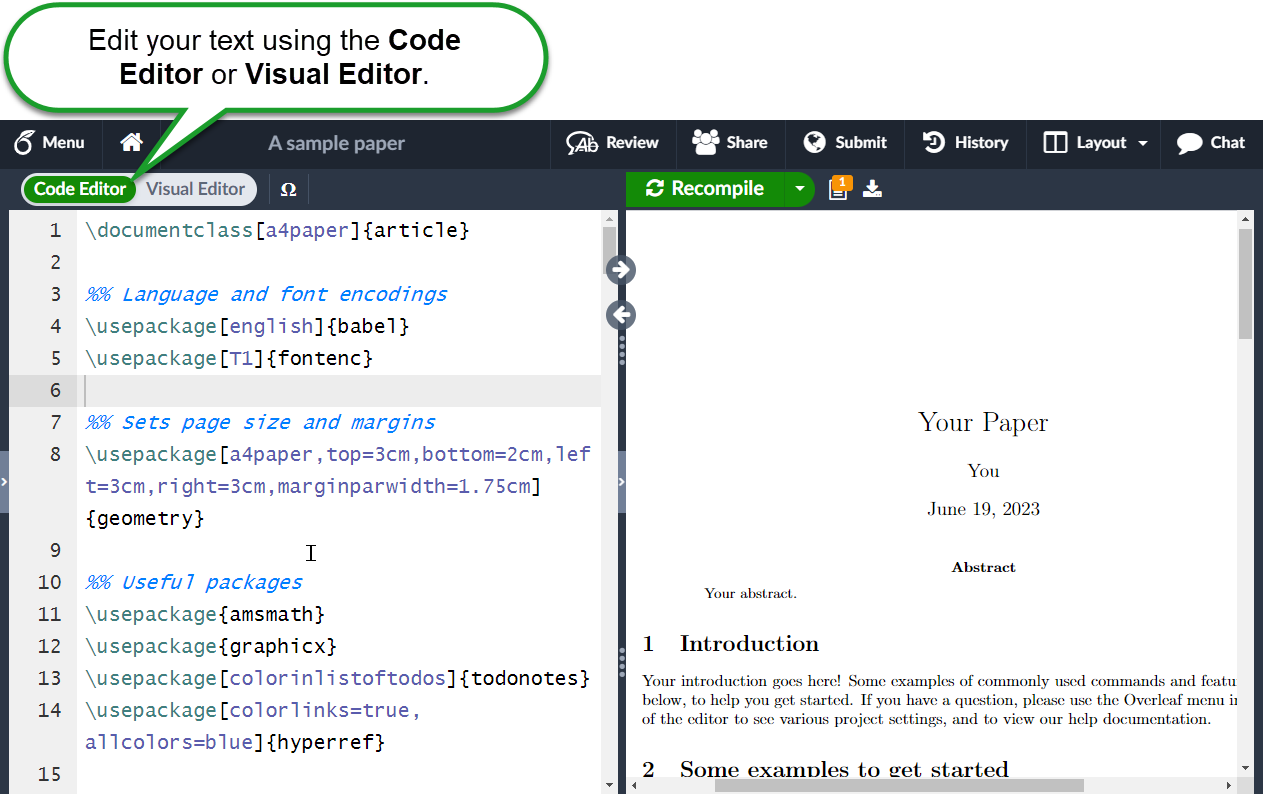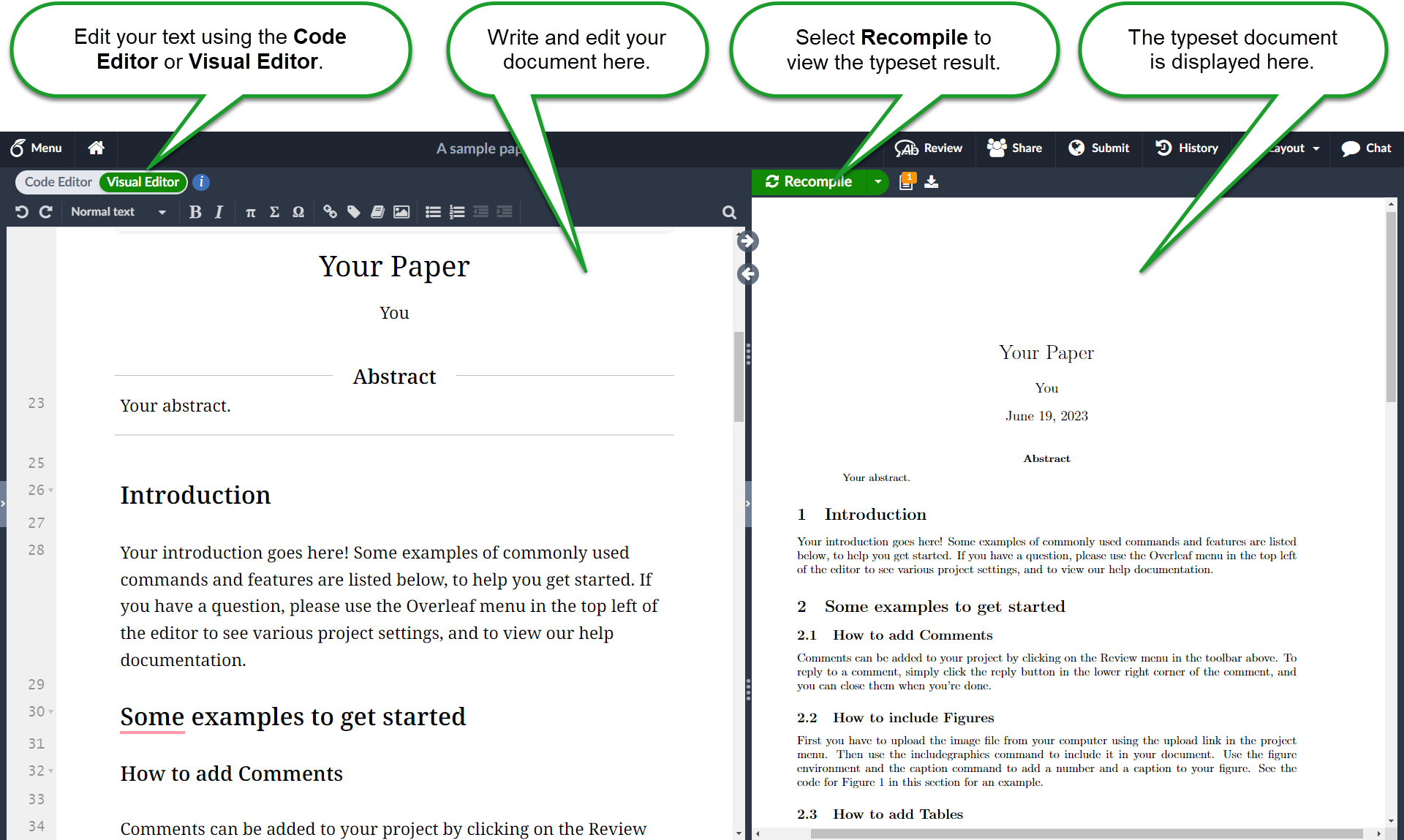How do I use Overleaf?
If you are familiar with LaTeX then using Overleaf couldn’t be simpler because we provide full support for direct LaTeX editing and automatically compile your document for you on our servers—there’s nothing to install! All you need to do is create a document, select the Code Editor and begin writing your LaTeX code:

If you are new to LaTeX and need some help to get started, our tutorials page lists a wide range of learning materials to jump-start your LaTeX journey. We’ve also pre-loaded a range of templates and examples into Overleaf to help you create your first document.
Another option for beginners is to start with a sample document using the Visual Editor and use that to explore Overleaf:

We hope you enjoy using Overleaf, and if you've any comments or questions, please get in touch via our contact page.